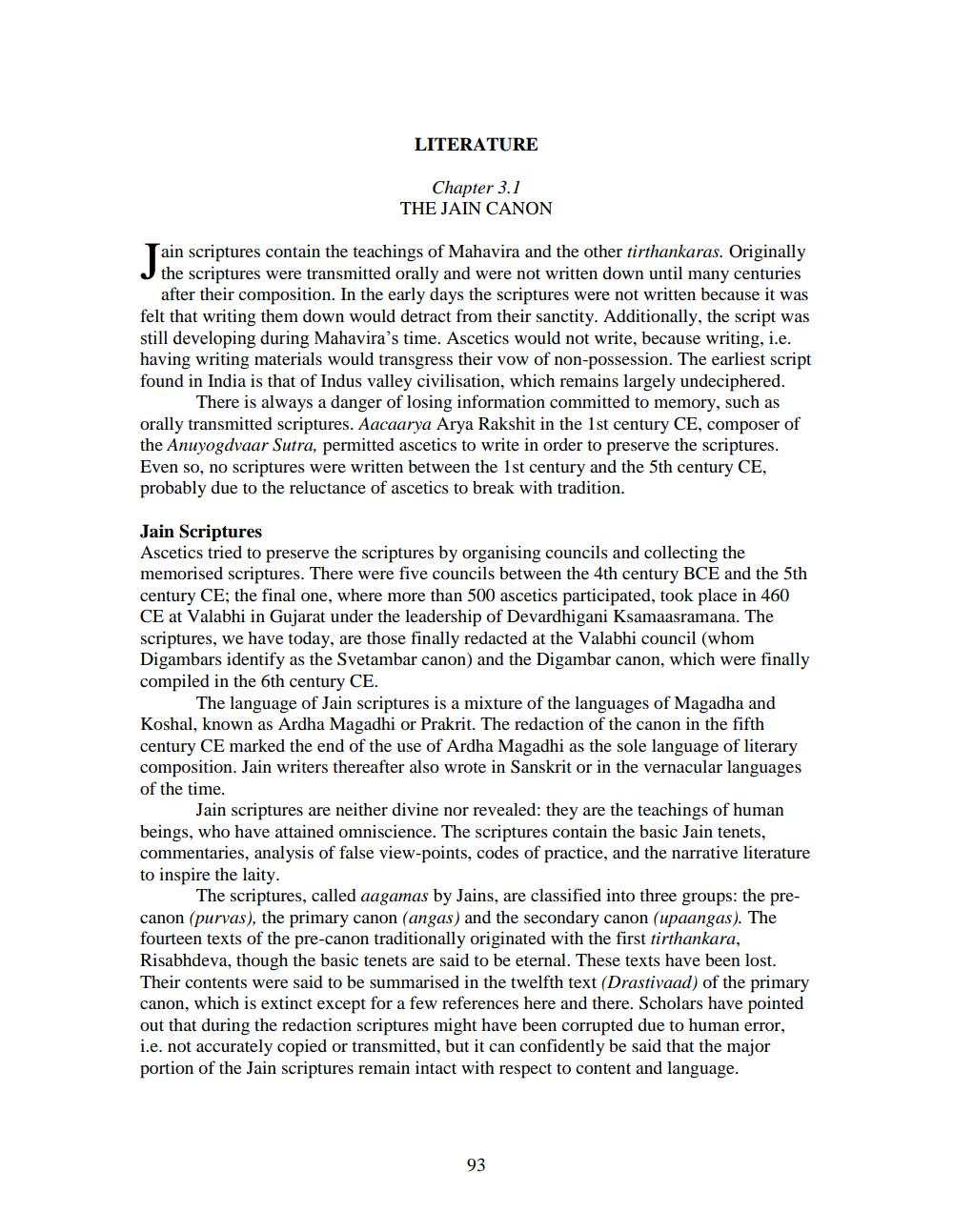________________
LITERATURE
Chapter 3.1 THE JAIN CANON
Tain scriptures contain the teachings of Mahavira and the other tirthankaras. Originally
the scriptures were transmitted orally and were not written down until many centuries
after their composition. In the early days the scriptures were not written because it was felt that writing them down would detract from their sanctity. Additionally, the script was still developing during Mahavira's time. Ascetics would not write, because writing, i.e. having writing materials would transgress their vow of non-possession. The earliest script found in India is that of Indus valley civilisation, which remains largely undeciphered.
There is always a danger of losing information committed to memory, such as orally transmitted scriptures. Aacaarya Arya Rakshit in the 1st century CE, composer of the Anuyogdvaar Sutra, permitted ascetics to write in order to preserve the scriptures. Even so, no scriptures were written between the 1st century and the 5th century CE, probably due to the reluctance of ascetics to break with tradition.
Jain Scriptures Ascetics tried to preserve the scriptures by organising councils and collecting the memorised scriptures. There were five councils between the 4th century BCE and the 5th century CE; the final one, where more than 500 ascetics participated, took place in 460 CE at Valabhi in Gujarat under the leadership of Devardhigani Ksamaasramana. The scriptures, we have today, are those finally redacted at the Valabhi council (whom Digambars identify as the Svetambar canon) and the Digambar canon, which were finally compiled in the 6th century CE.
The language of Jain scriptures is a mixture of the languages of Magadha and Koshal, known as Ardha Magadhi or Prakrit. The redaction of the canon in the fifth century CE marked the end of the use of Ardha Magadhi as the sole language of literary composition. Jain writers thereafter also wrote in Sanskrit or in the vernacular languages of the time.
Jain scriptures are neither divine nor revealed: they are the teachings of human beings, who have attained omniscience. The scriptures contain the basic Jain tenets, commentaries, analysis of false view-points, codes of practice, and the narrative literature to inspire the laity.
The scriptures, called aagamas by Jains, are classified into three groups: the precanon (purvas), the primary canon (angas) and the secondary canon (upaangas). The fourteen texts of the pre-canon traditionally originated with the first tirthankara, Risabhdeva, though the basic tenets are said to be eternal. These texts have been lost. Their contents were said to be summarised in the twelfth text (Drastivaad) of the primary canon, which is extinct except for a few references here and there. Scholars have pointed out that during the redaction scriptures might have been corrupted due to human error, i.e. not accurately copied or transmitted, but it can confidently be said that the major portion of the Jain scriptures remain intact with respect to content and language.




